The number one lesson of AFL punditry over the past two seasons has been simple: believing what you see unfolding in front of you can pay off. With that in mind, here are some facts about the first three rounds of the season and whether or not you should believe them.
If you looked hard enough and backed in your judgement, you would have known who the eventual premier was around this time in the past three seasons. Hawthorn was 2-2 with two close losses and a percentage of 141 after four rounds in 2015. The Western Bulldogs were holding their opponents to miserly totals in 2016. Richmond was running their opponents off their feet in 2017. Ex post facto, it all makes sense.
We hit on both the Dogs and Tigers in early season columns and backed the Hawks in to three-peat during the 2015 preseason. Can we make it four in a row?
Not yet. There is too much noise in the first three rounds of 2018. While Port Adelaide have streaked to three straight, Brisbane almost took them down at home over the weekend. Sydney is coming up trumps on my advanced metrics, going 2-1 against the league’s toughest schedule by far. Melbourne is slaying teams on the deck, an indicator of success over the past two seasons.
Gold Coast and West Coast sit inside the eight, Geelong and Richmond sit outside the eight. Hawthorn is in, Essendon is not. As we discussed on Monday, the gap between fifth and 14th is one win and just ten goals worth of percentage.
We’re nowhere near settled into our 2018 inning; it’s cloudy, the deck is green and the ball is swinging, aided in part by the AFL’s competitive balance policies (the sandpaper of our tortured metaphor). But throwing up our hands is not an option; we must hit our way through it.
There are an infinite number of facts from the first three rounds of the AFL in 2018. Scott Pendlebury leads the league in tackles (with 30). Conor McKenna has bounced the ball 14 times. The league’s kick-to-handball ratio is 1.42, an increase of almost 20 basis points (which is enormous). Let’s pick six, and work out whether they are real or not, because why not.
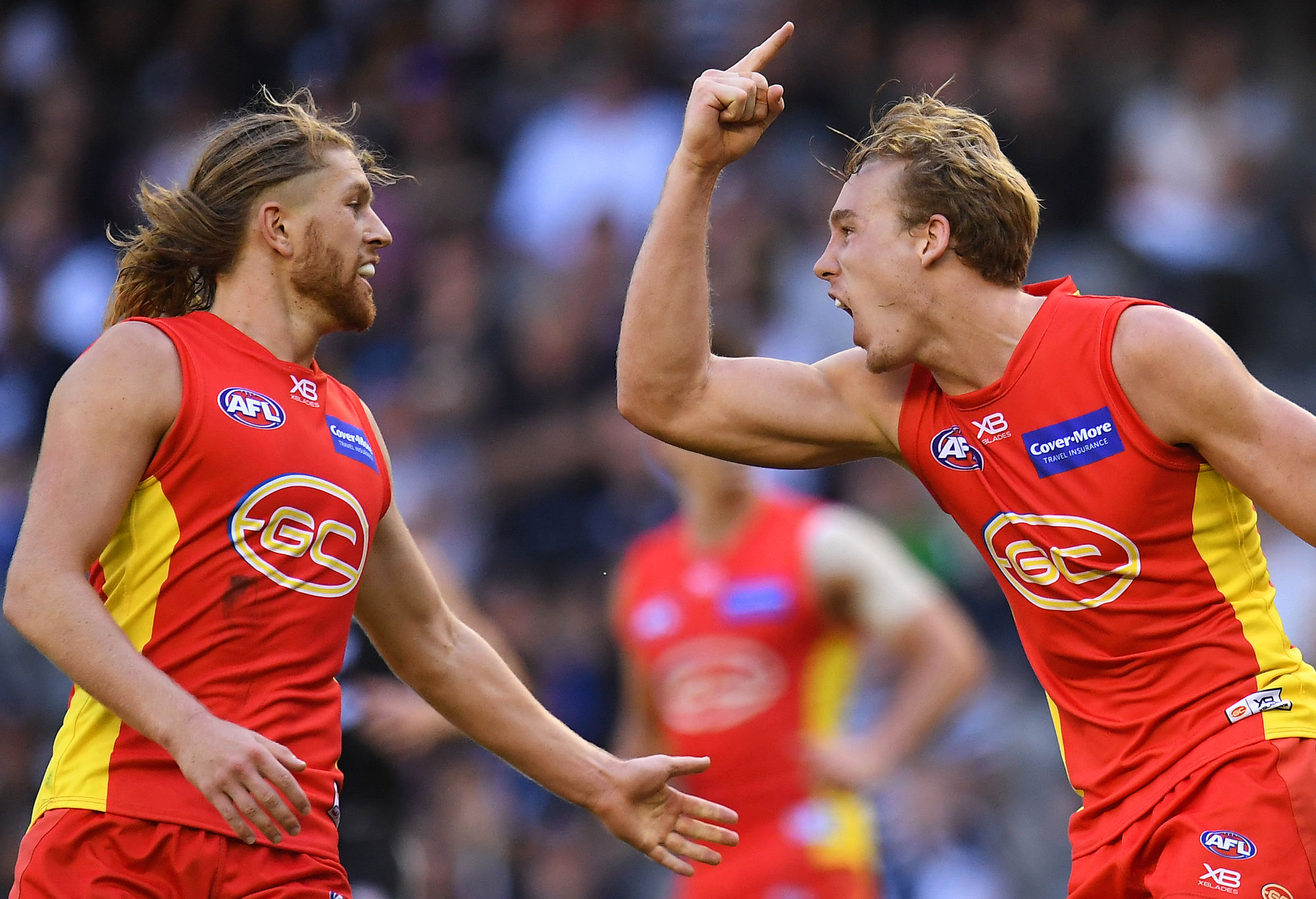
(AAP Image/Julian Smith)
Teams are handballing less
As a general trend the number of handballs per team per game is down significantly from 2017 and is lower than in 2016. Thus far teams have averaged 154 handballs per game, down from 172 in 2017.
The number is down on 2016’s 162.5 per team per game and 159.7 in 2015. We’re on track for the fewest handballs per game since 2007 before the great handball boom of the post-Geelong premiership era (it’s a thing).
Almost every team is handballing less, the exceptions being Carlton, who were the league’s lowest handballing team of 2017, and Collingwood, who are up just over a handball a game. And most clubs are replacing some of those handballs with kicks, while marking remains broadly unchanged. It means the league’s kick-to-handball ratio currently stands at 1.42, the highest since 2006.
What’s going on here? It’s a follow-the-leader response, but indirectly so. Richmond won its premiership on the back of frenetic ground-ball pressure and swift ball movement in attack. The Tigers modified their game plan from years prior, presumably after realising it had a mostly untapped resource on its list. It takes time to adjust a list profile, to make it more in keeping with a preferred game style.
Most teams can up their pressure rate, but it’s more challenging to flick the pace and space switch from a personnel perspective. Some teams can, and have: for example, West Coast tossed out a bunch of its slowpokes and brought in plenty of younger players with pace to burn. And so teams are kicking more as a means of moving the ball quickly and avoiding the tackle traps set as part of the defensive schemes at play in the league.
It’ll come back a little, if only because three rounds of statistics are likely to yield some outlier-type results. But considered alongside the eye test, the change in the league’s meta-game is real.
Assessment: Real.
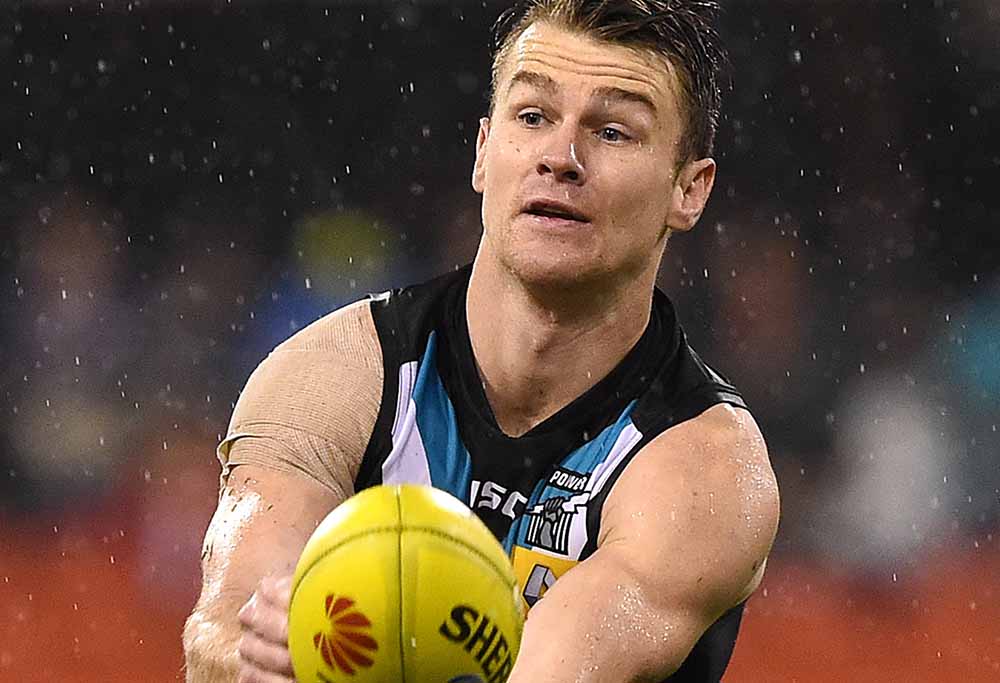
(AAP Image/Dave Hunt)
The Western Bulldogs are a bottom-four team
After two rounds this looked like a foregone conclusion. The Western Bulldogs had been obliterated by the GWS Giants and beaten soundly by the West Coast Eagles. Their trademark had been wiped, their team sapped of experience – by choice, it appears – and their coach’s game day moves looked like they had been concocted by a mad scientist.
The fans were flummoxed and Luke Beveridge himself appeared at a loss to explain what was going wrong. It appears simpler than one may suspect: the Western Bulldogs have fielded the youngest and least experienced team in the league each week of 2018. A team that was already chock full of youth, sprinkled with a literal handful of experienced players, had done what most young teams do.
It is a development that was unforeseen but not unforeseeable. In hindsight, perhaps we should have seen it coming. The Western Bulldogs won a premiership in 2016 with a team that was younger and less experienced than almost all who had come before it, and it has now lost the three oldest and most experienced players available to it.
While the Dogs won against Essendon on the weekend, it came on the back of a stellar performance by Marcus Bontempelli in the forward half and an all-round midfield display in keeping with the Dogs’ premiership year. The load was spread across the more experienced players, allowing the youngsters to chip in at moments throughout the game. It was also an anomalous game in that there was little inside action: just 36 general play ruck contests per estimates compiled from AFL Stats Pro.
Essendon might also be a little overhyped for a not dissimilar reason to the Dogs, all things considered.
The Dogs have Sydney at Etihad Stadium this weekend before travelling to Fremantle and hosting Carlton and Gold Coast in successive weeks. We will know definitively where the Dogs sit after that slate of games. A loss to Sydney will be no cause for alarm, but games against Gold Coast and Fremantle could be telling. For now it’s hard to believe the premiers of two years ago are one of the four worst teams in the league. But this isn’t that team. Believe it.
Assessment: Real.
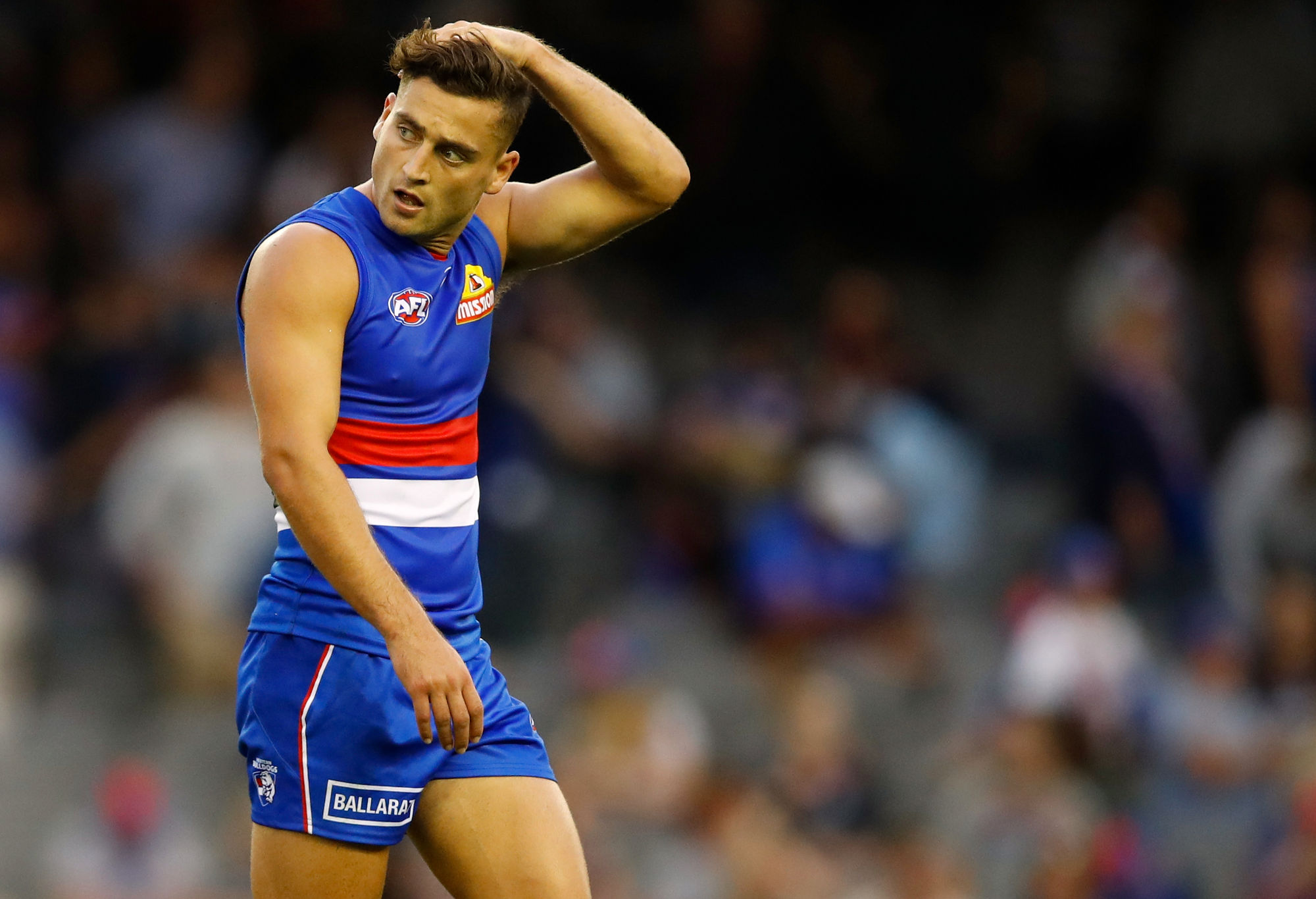
(Adam Trafford/AFL Media/Getty Images)
Tom Mitchell is averaging 45.3 disposals
There is no way known Mitchell will keep up his current rate of ball use for a full season. He set the modern league record for total disposals in a home-and-away season at 787, a mark which no-one had come close to before. Right now Mitchell is on pace for 997 disposals, a full 26 per cent more than the current record.
Mitchell’s role has gets clearer with every passing game: roam packs at stoppages and dish the ball out, and in general play hang around the middle of the ground and link up the forward and back half. Hawthorn’s midfield channels through him.
He has double the disposals of his so-called midfield partner Jaeger O’Meara and the rest of the Hawthorn midfield. This is fine, and it’s not a slight on O’Meara or anyone else, because the load Mitchell carries helps create opportunities for everyone else. He led the league in ‘assisted metres gained’ last year, and I dare say he’s doing it again in 2018.
Assessment: Not real.
Hawthorn is a top eight team
Real, and I’ll tell you why next week.
Assessment: Real.
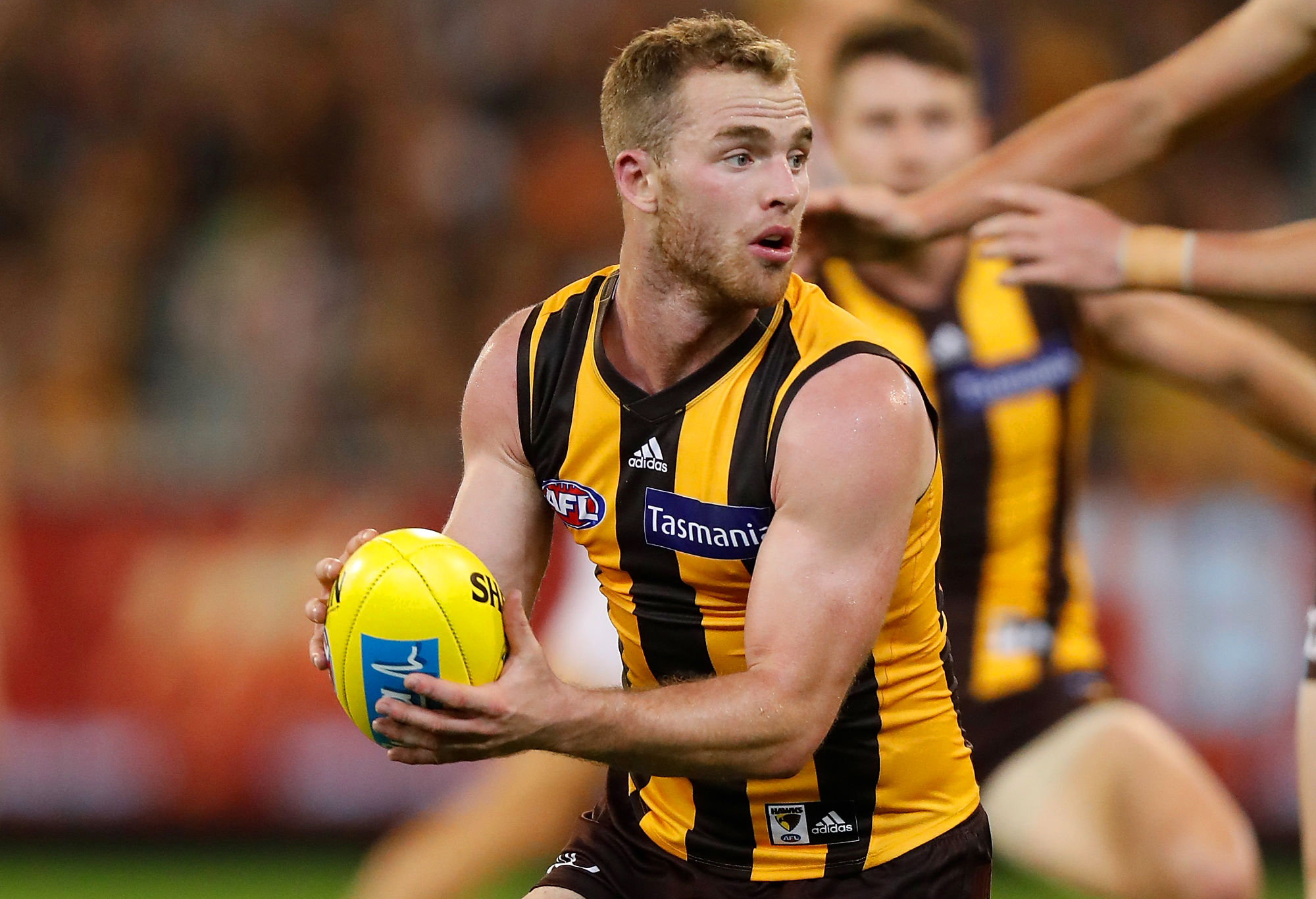
(Michael Willson/AFL Media/Getty Images)
Lance Franklin is kicking almost five goals for every behind
Buddy has kicked 14 goals, three behinds, and is yet to miss the lot when taking a set shot. That goes well against his career rate, where he’s kicked one and a half goals for every behind. He’s kicking them from everywhere too, including here, when the game was on the line against the Giants.
His rate will snap back to the mean a little as the season goes, but on early season form Franklin looks to have a well honed radar for the big sticks in 2018. Are you not entertained?
Assessment: Not real.
Geelong is outside the top eight
The Cats have stuttered to start the year and are a straight Max Gawn kick away from being mired in the bottom four (albeit with a strong percentage). Geelong has been playing with some of the tallest line-ups in the league over the past two years but, as we forecast before the year, they have changed it up and gone much smaller.
They are one of the teams who has changed up its ball movement, reducing its reliance on the handball (-14.4 per game year on year) and increasing its kicking (+21 per game year on year). The Cats are still a team that wants to play an inside-oriented game, but when it gets the ball on the outside is happy to play kick-mark football to create quality inside-50 entries.
It has manifested in a very poor inside-50 differential of -15.7 per game. The Cats have entered the stripe just 46.3 times per game, the fewest in the league, but they’ve scored on 57 per cent of entries, 25 per cent above the league average. Remarkably the Cats have a significantly negative inside-50 differential despite having the league’s second-highest time in possession differential.
We’re only three rounds in, so it’s not yet clear this is Chris Scott’s preference or a by-product of the way the Cats are trying to play. We will know soon – the Cats have St Kilda (who’ve given them trouble in recent years), Port Adelaide away, and Sydney and GWS at home in consecutive weeks as their next four.
The season could get away from the Cats extraordinarily quickly. However, three of their next four are on the familiar, narrow surrounds of Kardinia Park; their first three games have come at the comparatively wide MCG and Perth Stadium. It will be an important factor, particularly given the Cats are reeling off three straight weeks of games against potential top-four finishers.
Fortunately they are set to get a boost with the return of Mitch Duncan to their line-up this weekend. As much as Gary Ablett has added to the Cats, he is simply not the glue guy that Duncan had become over the past two seasons. Given the choice, I suspect Geelong will look more sound through the middle with Duncan completing the holy trinity than Ablett – a point which I am happy to be challenged on. Ablett needs to be the icing, not the cake itself, for Geelong to retain and improve its midfield potency.
Assessment: Not real, but it could get real very quickly.
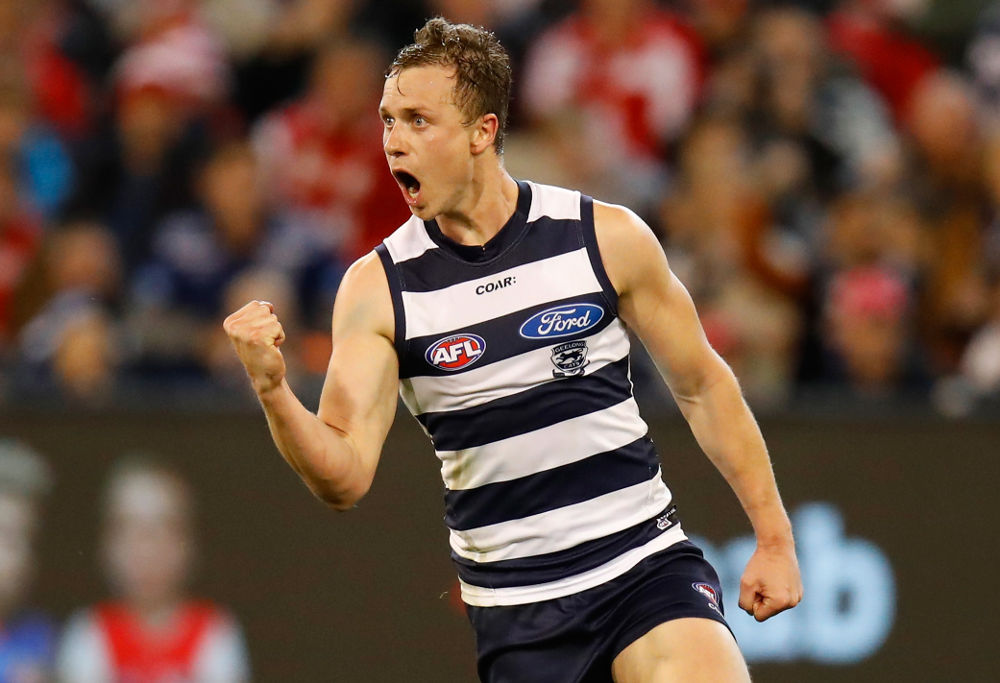
(Michael Willson/AFL Media/Getty Images)
Nat Fyfe is top five for contested possessions, top ten for clearances, and has kicked a goal and taken a contested mark per game
That he is.
Assessment: Real.
Melbourne is averaging +20.3 adjusted contested possessions per game
The Dees have embraced the swarm mentality of the Western Bulldogs of 2016 and are attempting to win every single contested ground ball in every single game they play. They are blending this with an extraordinarily sharp kicking game and ball movement patterns that would get Blake Caracella (Richmond’s maestro) excited.
Melbourne is third in the league for turnover rate (disposals per turnover) and number one for adjusted contested possession differential per game. They are the only team in the top four for both indicators, which for most other teams are not related in any way. It is a fierce combination that suggests the Demons are a legitimate team who will take some beating all year. And they’re doing it without two of their most important structural pieces in Jack Viney and Tom McDonald.
Anzac Day eve has become something of a blockbuster in a short time, and this season could loom as a decisive battle when it comes to sorting out top-four spots. Yes, Melbourne is that good.
Assessment: Real.
[latest_videos_strip category=”afl” name=”AFL”]
After three rounds the AFL ladder looks almost unrecognisable from a season ago and is non-conforming with most everyone’s preseason expectations. As we said on Monday, there is much to sort out and still a lot of time to do it.





























































































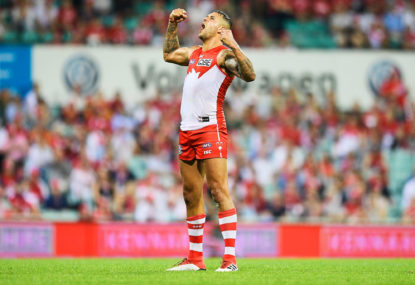



 (Michael Willson/AFL Media/Getty Images)
(Michael Willson/AFL Media/Getty Images)